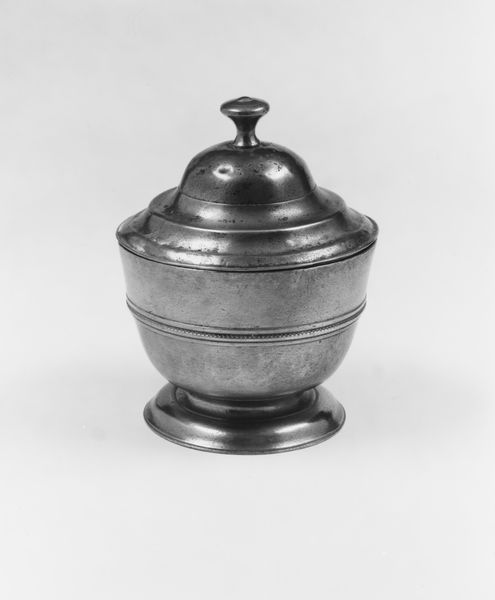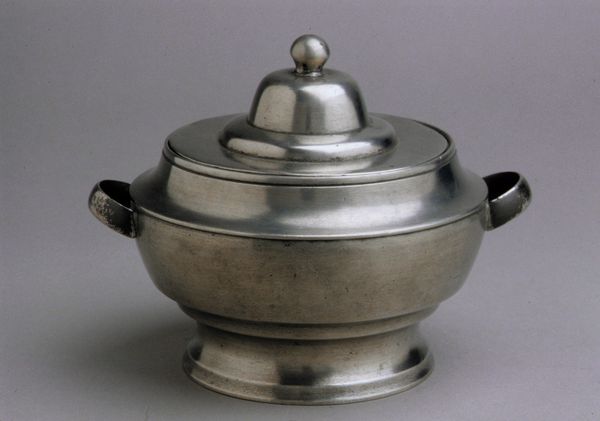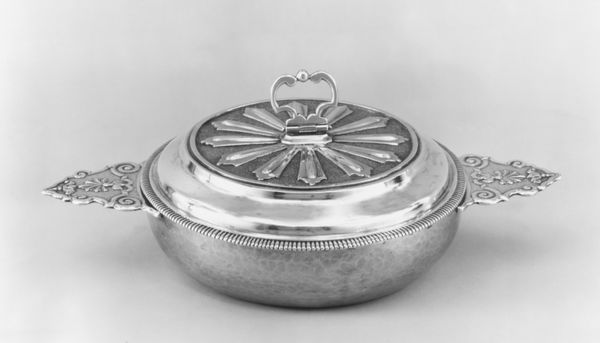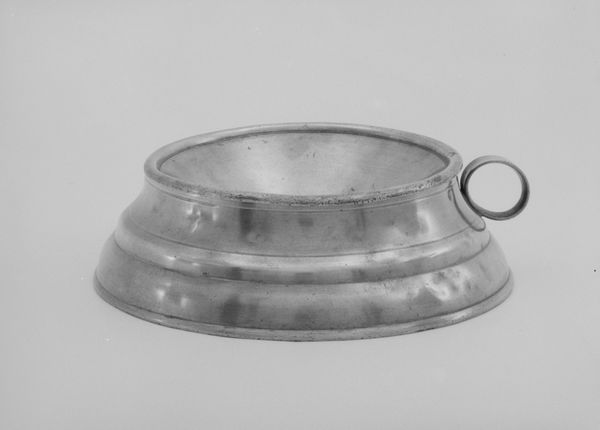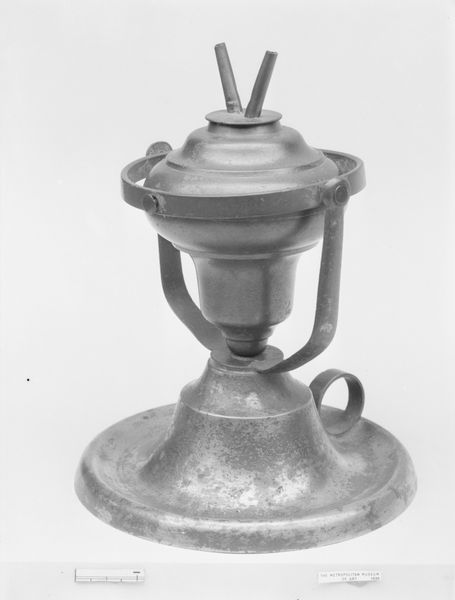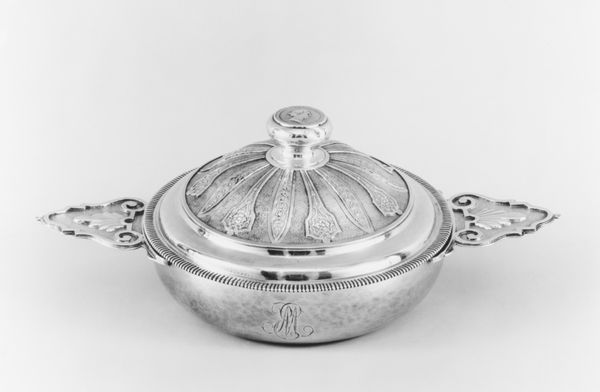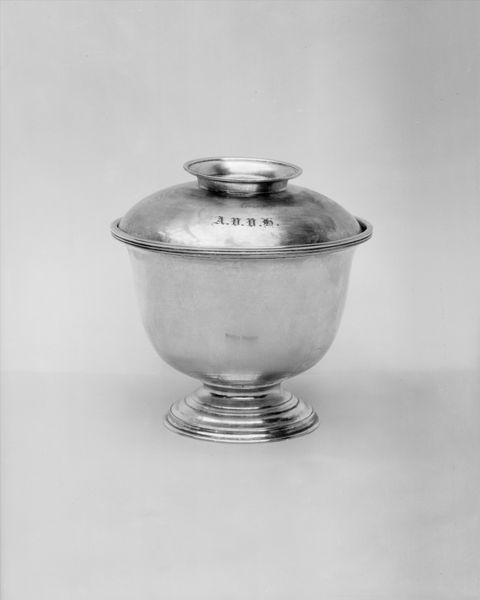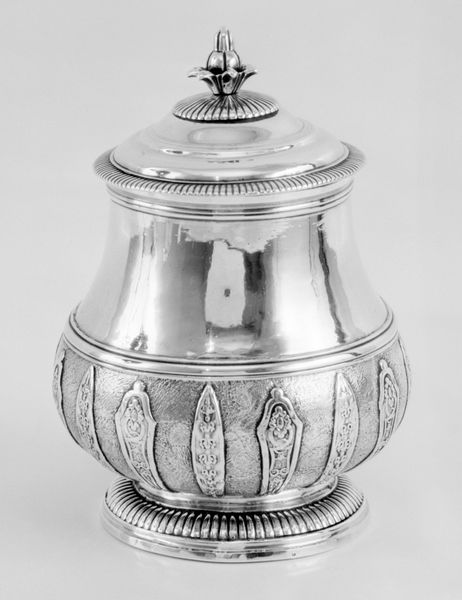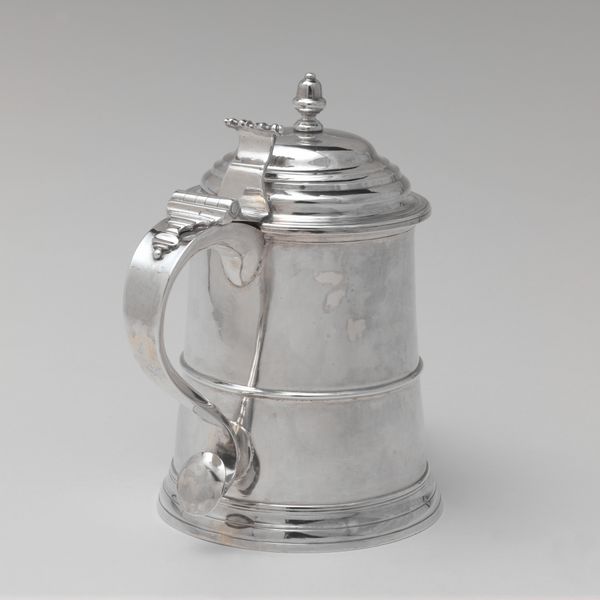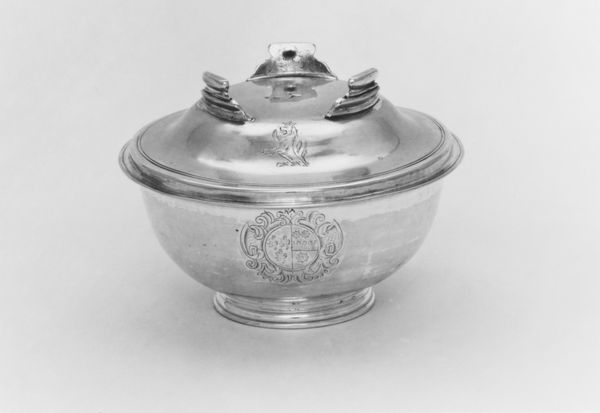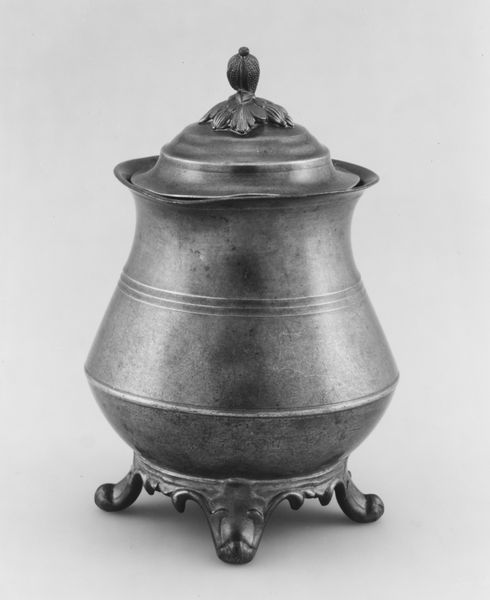
metal, sculpture
#
metal
#
stoneware
#
classicism
#
sculpture
#
united-states
Dimensions: H. 5 1/16 in. (12.9 cm)
Copyright: Public Domain
This sugar bowl was made by George Richardson, an American artist, out of pewter, sometime in the early 19th century. The bowl is a reminder that even the most domestic and intimate objects are caught up in larger structures of trade and labor. The rise of sugar consumption in the United States coincides with the expansion of slavery. Sugar plantations in the West Indies and the American South were sites of brutal exploitation, and the demand for sugar fueled the transatlantic slave trade. This bowl would have been used by someone with the economic means to purchase sugar. As historians, we look to objects like this as a way to better understand the complex relationship between art, labor, and consumption. We can consult archival sources, such as plantation records, bills of sale, and abolitionist pamphlets, to develop a more complete picture of the social and economic context in which this bowl was made and used.
Comments
No comments
Be the first to comment and join the conversation on the ultimate creative platform.
